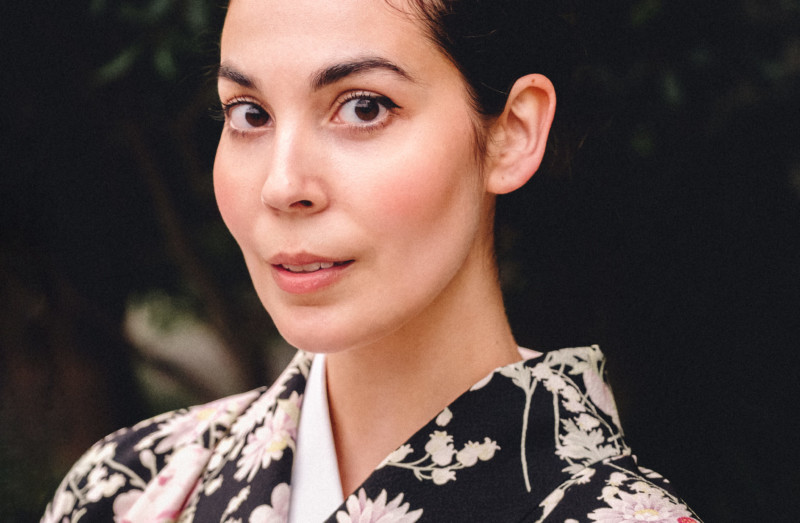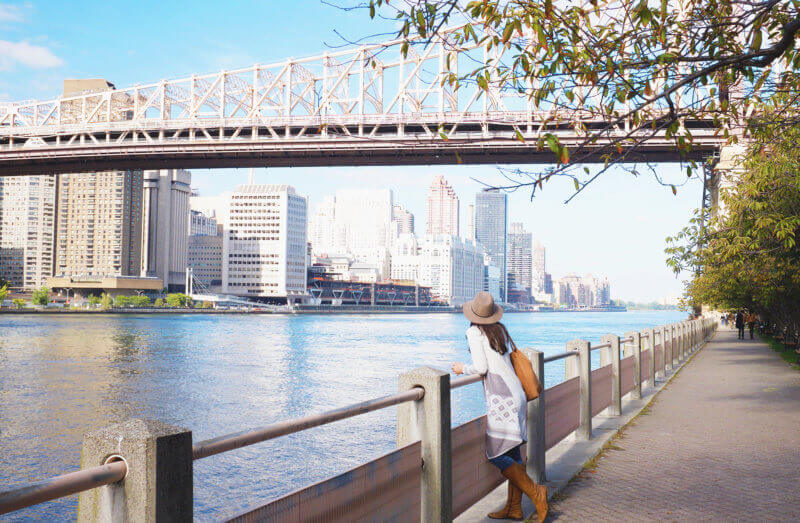After a few months of thinking about it, I decided I wanted to share my experience trying on a kimono, the traditional Japanese ensemble that dates back to the 8th Century. Now, I’m not one to dress up when I visit places, preferring to leave costumes in the theater, but when we made the fourteen-hour journey to Japan, my husband insisted I have the experience. When would I be back? How much fun would it be to walk around an ancient shine? These were the questions that persuaded me to do it, and so I relented despite being a little uncomfortable at first.
I am hyper-aware of the times we live in and didn’t want to be disrespectful to Japanese culture or appropriate anything — which is why I resigned myself not to share these images. But then I thought recently about the beauty of Japan, how much I missed it, and how welcome and encouraged I was to engage in all aspects of the culture. It’s important to me that these images come from a place of respect, of appreciation, and hopefully they also share some of the fun I had along the way.
My hair was done in a salon in Harajuku, in a quiet shop down the block from a cotton-candy colored creperie where even the trash looked adorable. The ladies inside spoke little English, save for my incredible host: Kahori-san, who owns Kimono Sakaeya, a Kimono rental shop that she runs from her home. She instructed the stylist, translated my desire for “the bigger, the better,” and then let me pick from an array of hair pieces that would adorn my finished quaff. Unlike Japanese hair, my dark brown locks are crimpy and more than likely to frizz. But the woman who was assigned to my head didn’t waver. Rather, she sprayed and twirled and tucked my hair in ways I did not think were possible — building a smooth, sculpted shape that resembled the classic Japanese style found in magazines.
With my hair fitted tightly against my head, we strolled to Kahori-san’s apartment. I trailed her elegant, gliding walk, meandering behind with my undignified gait. There she welcomed me, performed a tea ceremony where I was woefully insecure about my movements, and draped me in the expensive silk garments that once belonged in her family’s shop. I forgot to mention that she did all this while impeccably dressed in her own kimono. As Kahori-san began to wrap me in all the layers of tradition, I asked questions about the origin of each garment, how one is to put them on, and I watched in awe as she effortlessly folded and placed silk around my body in a way only certain people care to know how.
I’ll admit here that I felt awkward. I’m a tall woman, an American, and comparison was unavoidable. Most of the time in Japan, I felt a little messy and disheveled, rushing or sweating somewhere, with too many bags in my hands. Meanwhile, all around the country were scenes of elegance, peace, and calm. This contrast was only accentuated by the kimono experience — my giant feet turning to near sausages inside the white two-toed socks that were gifted to me. But as I was so kindly welcomed, I put my hesitancy behind and embraced the clothing experience with an openness I wish I could bring to most new encounters. The folds of the garment wrapping pulled me taught, lifting my spine and ribs like a corset. My back was supported, my neck elongated, and the weight of the kimono felt like a grounding presence in the bustling metropolis.
I couldn’t believe how I looked in the mirror, unlike myself with the hair smoothed over my head, accentuating the ovalness of my face. And the kimono, tight around my body, felt both like armor and a gown — its beautifully patterned layers insulating me from the outside. Donned with a fan and small bag, the look was complete.

However, I did feel nervous about falling on my face in challenging shoes.
Jon took a few photos of me around a nearby shrine, which, to my relief, was a few steps behind Kahori-san’s apartment. I was mindful to walk the way Kahori-san showed me and mimicked her grace as best I could.
When you look like me, that is to say, ethnically ambiguous, you can find yourself in all sorts of situations in other countries that make you laugh! European tourists took pictures of me on the sly as I walked around the raised walkway above a koi pond. It was only a short time later that I was engulfed by a gaggle of drunken businessmen, showering me with kind words and asking if I was Japanese (like them). And when we took a series of images in front of the shrine, locals passing through for a quick, post-work prayer, took pictures of me with their iPhones. I suppose I was a bit of a spectacle.
Before that day, kimonos felt foreign to me, like a secret I would never be in on. I learned a lot about the beauty and grace of Japan, the women, and the ingenuity of their traditional clothing. When Kahori-san released me from the binds, I relaxed into my usual poor posture, slouching back to the curved hunch of most computer-bound Americans.
I had already lost the grace I so recently had discovered.

Kimonos are beautiful, yes, but they are also a gateway to intimacy. In the privacy of Kahori-san’s home, she bid me welcome, shared her tea, and then wrapped me in cloth in a way that mimicked a loving embrace. How to wear a kimono is taught, from mother to daughter, and the fabric is often passed down, worn for special occasions, and displayed in a place of prominence in the home. When you learn these things, you can only better understand the beauty of each garment and of the years of traditions they represent.
They say if you want to know someone better, walk a mile in their shoes. Well, have you tried to walk in a kimono?
If you find yourself heading to Japan, please, please, please reach out to Kahori-san and book a rental with Kimono Sakaeya — you will not be disappointed! Have you ever tried on a piece of traditional clothing? Share your thoughts with me in the comments below!

















